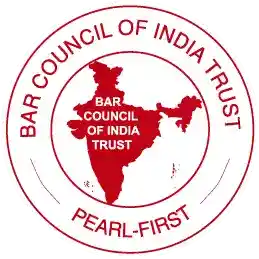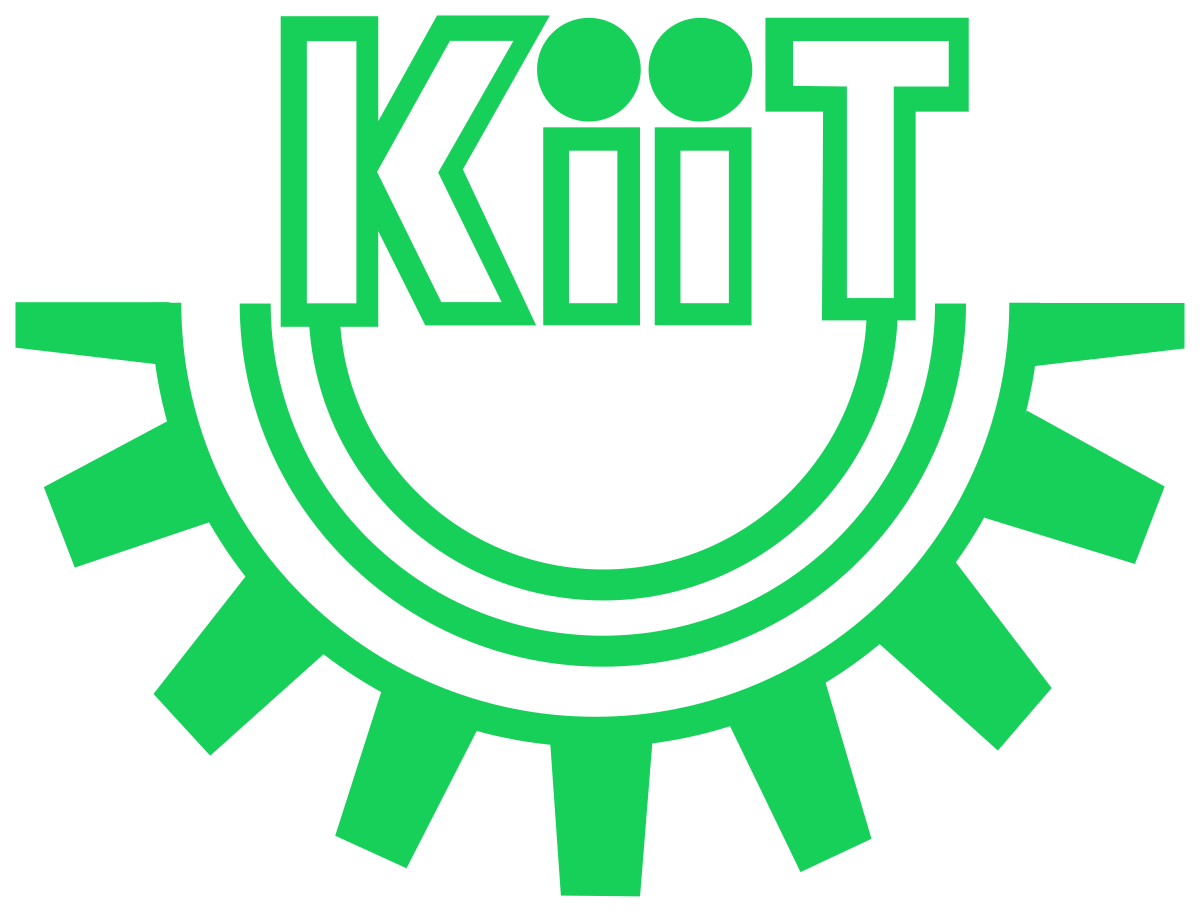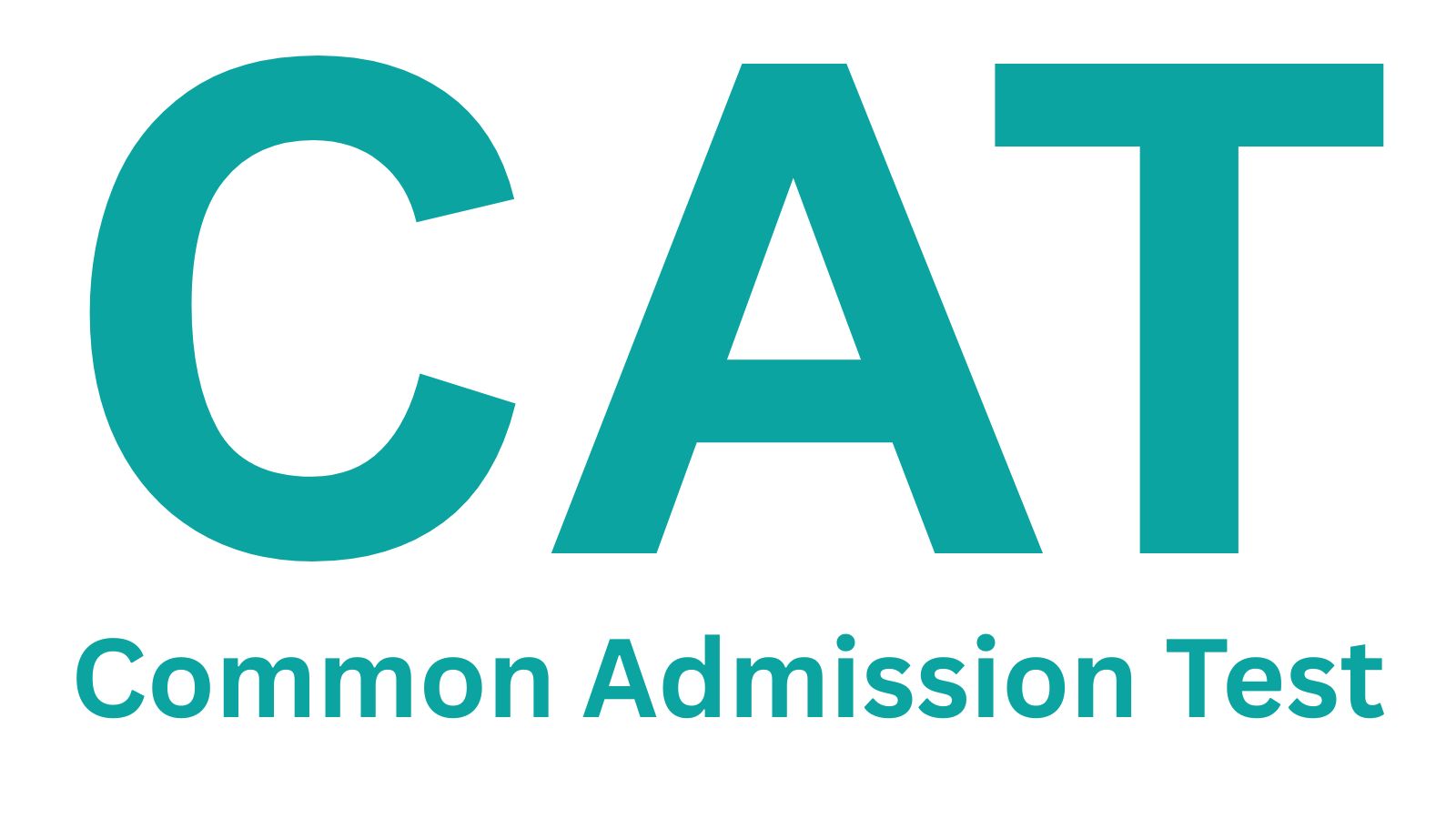If you are preparing for VITEEE 2026, then now is the best time to understand its official syllabus. Vellore Institute of Technology (VIT) has released the latest syllabus on its website to help students know exactly what to study for the exam.
The VITEEE 2026 syllabus includes five main subjects - Physics, Chemistry, Mathematics, Biology, English and Aptitude. It is based on the topics of NCERT books of class XI and XII, so most of what you will study in school will help you in this exam.
The syllabus clearly lists all the important chapters and topics for each subject. It also helps you understand chapter-wise importance so that you can plan your preparation smartly and devote more time to important topics.
Before starting your studies, read the complete VITEEE syllabus, download the official PDF, and create a simple study plan that matches the topics offered by VIT.
VITEEE Syllabus 2026: Subject - wise Topics
The VITEEE 2026 syllabus includes five core subjects – Physics, Chemistry, Mathematics, Biology, English and Aptitude. Each subject plays an important role in the exam and is based on the core subjects you have already studied in class XI and XII. The tables below provide a simple, subject-wise list of all the important topics that will help you plan your preparation better.
VITEEE 2026 Physics Syllabus
| Unit | Topics Covered |
| Mechanics and Properties of Matter | Law of conservation of linear momentum and its applications. Static and kinetic friction and laws of friction. Rolling friction. Work done by a constant and variable force. Kinetic energy and work energy theorem. Power and conservative forces. Conservation of mechanical energy involving kinetic and potential energies. Motion in a vertical circle. Elastic and inelastic collisions. Elastic behaviour, stress-strain relationship, shear modulus, Poisson’s ratio, and Hooke’s law. Young’s modulus, bulk modulus, and elastic energy. Fluid flow, viscosity, Stokes’ law, terminal velocity, Bernoulli’s theorem, and applications. Heat and thermodynamics including Zeroth law, temperature, first law of thermodynamics, internal energy, work, isothermal and adiabatic processes. Second law of thermodynamics, reversible and irreversible processes, thermal expansion, heat capacity (Cp, Cv), latent heat, blackbody radiation, Wien’s displacement law, and Stefan’s law. |
| Electrostatics | Electric charge and its conservation. Coulomb’s law and superposition principle. Electric field and field lines. Electric dipole and its behaviour in a uniform electric field. Electric potential and potential difference. Potential due to a point charge and dipole. Equipotential surfaces and potential energy of a two-charge system. Electric flux and Gauss’s law with applications. Electrostatic induction, capacitor and capacitance, dielectrics, electric polarisation, parallel plate capacitor with and without dielectric. Energy stored in capacitors, series and parallel combinations, and Van de Graaff generator. |
| Current Electricity and Magnetic Effects of Electric Current | Electric current, drift velocity, mobility, and relation with electric current. Ohm’s law, electrical resistance, resistivity, and conductivity. Classification of materials based on conductivity. Carbon resistors and colour code. Effect of temperature on resistance. Series and parallel combinations of cells and resistors. Internal resistance, potential difference, and emf of a cell. Kirchhoff’s laws, Wheatstone bridge and metre bridge, potentiometer and comparison of emf of two cells. Magnetic field concept, Oersted’s experiment, Biot-Savart law, magnetic field due to a straight wire and circular coil, tangent galvanometer, and bar magnet as a solenoid. Ampere’s circuital law and applications. Force on moving charge in electric and magnetic fields. Cyclotron principle, force between parallel conductors, torque on a current loop, moving coil galvanometer, conversion to ammeter and voltmeter, magnetic dipole moment, and current loop as a magnetic dipole. |
| Optics | Reflection of light, spherical mirrors, and mirror formula. Refraction of light and total internal reflection with applications. Refraction at spherical surfaces, thin lens formula, and lens maker’s formula. Magnification, power of lens, and combination of thin lenses. Resolving power, refraction, and dispersion through a prism. Wavefront and Huygens’ principle. Reflection, refraction, and total internal reflection using wavefronts. Interference and Young’s double-slit experiment. Fringe width and coherent sources. Formation of colours in thin films, Newton’s rings, and diffraction. Difference between interference and diffraction. Polarisation of light, Brewster’s law, double refraction, Nicol prism, and uses of plane-polarised light. |
| Dual Nature of Radiation, Atomic and Nuclear Physics | Electromagnetic waves, their transverse nature, and spectrum. Displacement current and electromagnetic wave characteristics. Photoelectric effect, photons, light’s particle nature, and photocells with applications. Atomic structure and discovery of the electron. Thomson’s and Millikan’s experiments, Rutherford’s atomic model. Nuclear properties including radii, masses, binding energy, density, charge, isotopes, isobars, and isotones. Nuclear mass defect, binding energy, and stability of nuclei. Nature of nuclear forces, radioactivity, alpha, beta, and gamma radiations. Radioactive decay law, half-life, mean life, artificial radioactivity, radioisotopes, and nuclear fission, fusion, chain reaction, nuclear reactor, and atomic energy applications. |
| Semiconductor Devices and Their Applications | Basics of semiconductors and energy bands in solids. Difference between conductors, insulators, and semiconductors. Doping process, intrinsic and extrinsic semiconductors. Formation of P-N junction, depletion layer, and barrier potential. Characteristics of P-N junction diode under forward and reverse bias. Diode as a rectifier and Zener diode as a voltage regulator. Light Emitting Diode (LED). Junction transistors, transistor as a switch, amplifier, and oscillator. Logic gates like NOT, AND, OR, and EX-OR using discrete components. Universal gates NAND and NOR. Boolean algebra and De Morgan’s theorems. |
VITEEE 2026 Chemistry Syllabus
| Unit | Topics Covered |
| Physical Chemistry | Atomic structure, Bohr and Sommerfeld models, quantum numbers, orbitals, electronic configuration, Pauli’s exclusion principle, Hund’s rule, Aufbau principle, emission and absorption spectra, hydrogen spectrum, de Broglie’s theory, Heisenberg’s uncertainty principle, and Schrödinger equation. Chemical bonding and hybridization involving s, p, and d orbitals. Laws of thermodynamics, entropy, Gibbs free energy, spontaneous and non-spontaneous processes. Law of mass action, Le Chatelier’s principle, and chemical equilibrium. Rate of reaction, order and molecularity, rate constant, half-life, Arrhenius equation, activation energy, and collision theory. Concentration terms, colligative properties, Raoult’s law, and ideal and non-ideal solutions. |
| Inorganic and Material Chemistry | Properties and reactivity of alkali and alkaline earth metals. Phosphorus compounds, hydrogen halides, interhalogen compounds, xenon fluorides. Electronic configuration and oxidation states of transition elements, extraction and uses of copper, silver, gold, and zinc compounds. Lanthanides and actinides, their characteristics, oxidation states, and uses. Coordination compounds, IUPAC naming, isomerism, Werner’s theory, valence bond theory, and applications. Lattice, unit cell, types of crystals, point defects, X-ray diffraction, electrical properties, and amorphous solids. Adsorption, types of adsorptions, and catalysis. |
| Analytical Chemistry | Redox reactions, conductance, Faraday’s laws, variation of conductance with dilution, Kohlrausch’s law, ionic product of water, pH and buffer solutions. Electrochemical cells, electrodes, EMF, Nernst equation, dry and galvanic cells, lead accumulator, fuel cells, corrosion and its prevention. Environmental pollution including air, water, and soil pollution. |
| Basic Principles of Organic Chemistry | Carbon valency, hybridization, functional groups, homologous series, IUPAC nomenclature, substitution, addition, elimination and rearrangement reactions. Structural, geometrical, and optical isomerism, chirality, R-S, and D-L notation. Inductive, electrometric, resonance, and hyperconjugation effects. Detection of alcohols, phenols, aldehydes, ketones, carboxylic acids, and amines. |
| Properties and Chemistry of Functionalized Organic Compounds | Preparation and properties of mono, di, and trihydric alcohols, phenols, benzyl alcohol, and anisole. Preparation and reactions of aldehydes and ketones including Clemmensen, Wolff–Kishner, Cannizzaro, Claisen–Schmidt, Benzoin, and Aldol condensation. Preparation and properties of formic, lactic, oxalic, and benzoic acids, and derivatives like acetyl chloride, acetamide, acetic anhydride, and esters. |
| Organic Nitrogen Compounds | Preparation, properties, and uses of aliphatic and aromatic nitro compounds. Preparation and reactions of primary, secondary, and tertiary amines, aniline, and benzylamine. Preparation and uses of nitriles and diazonium salts. |
| Biomolecules and Polymers | Structure of glucose, fructose, and sucrose, distinction between sugars and non-sugars. Classification of amino acids, structure and denaturation of proteins, and role of enzymes. Types of lipids, fats, oils, and waxes. Structure of DNA and RNA. Classification and examples of polymers such as polythene, nylon, polyester, Bakelite, rubber, and biodegradable polymers. |
VITEEE 2026 Mathematics Syllabus
| Unit | Topics Covered |
| Matrices and their Applications | Algebra of matrices, determinants and their properties, simultaneous linear equations up to three variables, adjoint and inverse of a square matrix, rank of a matrix, test of consistency and solution of equations, and linear programming problems. |
| Trigonometry and Complex Numbers | Fundamentals of trigonometry, trigonometric and inverse trigonometric functions, properties, heights, and distances. Complex number system, conjugate, properties, and representation in ordered pairs. Argand diagram, algebra of complex numbers, modulus and argument, polar form, De Moivre’s theorem and its applications, roots of complex numbers including cube and fourth roots. |
| Analytical Geometry of Two Dimensions | Coordinate geometry, equations of straight lines and families of straight lines, properties of conic sections, general and standard equations of parabola, ellipse, and hyperbola, directrix, focus, latus rectum, parametric forms, tangents, normals, and equations of chords and chords of contact. |
| Vector Algebra | Scalar and vector products of two vectors, properties and applications, scalar and vector triple products, and their properties. |
| Analytical Geometry of Three Dimensions | Coordinates of a point in space, distance between two points, section formula, direction ratios and cosines, angle between two intersecting lines, skew lines, shortest distance between skew lines, equations of lines and planes in different forms, intersection of line and plane, and condition for coplanarity. |
| Differential Calculus | Limits, continuity, and differentiability of functions, tangent and normal equations, angle between curves, mean value theorems (Rolle’s and Lagrange’s), Taylor and Maclaurin series, stationary points, increasing and decreasing functions, maxima and minima, concavity, points of inflection, and errors and approximations. |
| Integral Calculus and its Applications | Simple definite integrals, fundamental theorems of calculus, properties of definite integrals, reduction formulae, and applications such as finding area of bounded regions and length of curves. |
| Differential Equations | Formation, order, and degree of differential equations, solutions of first-order equations including variable separable, homogeneous, and linear forms, and real-life applications. |
| Probability and Distributions | Basics of probability, axioms, addition and multiplication laws, conditional probability, Bayes’ theorem, random variables, probability density and distribution functions, mathematical expectation, variance, and discrete distributions including binomial and Poisson. |
| Discrete Mathematics | Sets, relations, functions, binary operations, sequences and series (arithmetic, geometric, and harmonic progressions), binomial theorem, counting techniques, mathematical logic, logical statements, connectives, truth tables, logical equivalence, tautology, and contradiction. |
VITEEE 2026 Biology Syllabus
| Unit | Topics Covered |
| Taxonomy | Need for classification, three domains of life, Linnaean, Whittaker, Bentham and Hooker systems of classification. Salient features and classification of non-chordates up to phylum level and chordates up to class level. Morphology and anatomy of flowering plants. Structural organization in insects such as cockroaches. |
| Cell and Molecular Biology | Cell theory, structure of prokaryotic and eukaryotic cells, cell wall, cell membrane, cytoskeleton, nucleus, chloroplast, mitochondria, endoplasmic reticulum, Golgi bodies, ribosomes, lysosomes, vacuoles, and centrosomes. Cell cycle and division including amitosis, mitosis, and meiosis. Search for genetic material, structure of DNA and RNA, replication, transcription, genetic code, translation, splicing, gene expression and regulation (lac operon), and DNA repair. |
| Reproduction | Asexual reproduction including binary fission, sporulation, budding, gemmule formation, fragmentation, and vegetative propagation in plants. Sexual reproduction in flowering plants including structure of flowers, pollination, fertilization, development of seeds and fruits, seed dispersal, apomixis, parthenocarpy, and polyembryony. Human reproductive system, gametogenesis, menstrual cycle, fertilization, implantation, embryo development up to blastocyst, pregnancy, parturition, and lactation. Assisted reproductive technologies. |
| Genetics and Evolution | Structure and types of chromosomes, linkage, crossing over, recombination, mutation, and chromosomal aberrations. Mendelian inheritance, chromosomal theory of inheritance, deviation from Mendelian ratios such as incomplete dominance, codominance, multiple allelism, pleiotropy, and sex-linked inheritance. Sex determination in humans. Darwinism, neo-Darwinism, Hardy–Weinberg principle, and factors affecting equilibrium including selection, mutation, migration, and random genetic drift. |
| Human Health and Diseases | Pathogens and parasites causing human diseases such as malaria, dengue, chikungunya, filariasis, COVID, ascariasis, typhoid, pneumonia, common cold, amoebiasis, and ringworm, and their control. Basic concepts of immunology, vaccines, antibiotics, cancer, HIV, and AIDS. Adolescence, drug and alcohol abuse. |
| Biochemistry | Structure and function of carbohydrates, lipids, and proteins. Enzymes, their types, properties, and mechanism of enzyme action. Metabolism including glycolysis, fermentation, and Krebs cycle. |
| Plant Physiology | Movement of water, food, nutrients, gases, and minerals. Passive and facilitated diffusion, active transport, imbibition, osmosis, apoplast and symplast transport, and guttation. Macro and micronutrients, and deficiency symptoms. Transpiration, photosynthesis (light and dark reactions), electron transport chain, hormones and growth regulators, photoperiodism, vernalization, nitrogen cycle, and biological nitrogen fixation. |
| Human Physiology | Digestion and absorption, breathing and respiration, body fluids and circulation, excretory, endocrine, nervous, skeletal, and muscular systems. Locomotion and movement, growth, aging, and death. Types of hormones, their functions, and related disorders. |
| Biotechnology and its Applications | Recombinant DNA technology and its applications in health, agriculture, and industry. Genetically modified organisms, production of human insulin, vaccines, and antibiotics. Stem cell technology, gene therapy, apiculture, animal husbandry, plant breeding, tissue culture, single cell protein, food fortification, Bt crops, and transgenic animals. Microbes in food processing, sewage treatment, waste management, energy generation, biocontrol agents, and biofertilizers. Bio-safety issues, biopiracy, patents, human and rice genome projects, and DNA fingerprinting. |
| Biodiversity, Ecology, and Environment | Components and types of ecosystems, ecological pyramids, nutrient cycles (carbon and phosphorus), ecological succession, and energy flow. Concepts of biodiversity, its importance, patterns, conservation methods, hotspots, endangered organisms, extinction, Red Data Book, botanical gardens, national parks, sanctuaries, museums, biosphere reserves, and Ramsar sites. Environmental issues including pollution control, solid and radioactive waste management, climate change, and its mitigation. Population attributes such as growth, birth rate, death rate, and age distribution. |
VITEEE 2026 English & Aptitude Syllabus
| Section | Topics Covered |
| English | Multiple Choice Questions based on comprehension of short passages or lines of poems. Questions on English grammar and pronunciation. The passages, dialogues, grammar, and pronunciation items will be of higher secondary or equivalent level to test understanding, usage, and interpretation skills. |
| Aptitude |
|
- After checking all the topics, you can download the full syllabus PDF and keep it handy while preparing
Best Books for VITEEE 2026 Preparation
The books listed below are recommended by experts and widely used by students for VITEEE 2026 preparation. These books cover the entire syllabus and can help you study in a clear and well-organized way.
| Subject | Book Name | Author / Publisher | Key Features |
| Physics | Concepts of Physics Vol 1 & 2 | H. C. Verma | Builds strong conceptual clarity, contains both theory and solved problems, ideal for fundamentals |
| Understanding Physics (Set of 4 Books) | D. C. Pandey (Arihant) | Topic-wise coverage, ideal for numerical practice and quick revisions | |
| Fundamentals of Physics | Halliday, Resnick & Walker | Advanced conceptual understanding and application-based questions | |
| Errorless Physics for VITEEE | Universal Publications | Covers all topics of VITEEE syllabus with previous year MCQs | |
| Chemistry | NCERT Chemistry (Class 11 & 12) | NCERT | Builds a strong base, most conceptual questions are derived from here |
| Concepts of Physical Chemistry | P. Bahadur | Best for problem solving and numerical-based questions | |
| Modern Approach to Chemical Calculations | R. C. Mukherjee | Strengthens understanding of stoichiometry and physical chemistry numericals | |
| Organic Chemistry | O. P. Tandon | Comprehensive book with reactions, mechanisms, and conceptual clarity | |
| Errorless Chemistry for VITEEE | Universal Publications | Topic-wise MCQs, formula sheets and past year questions | |
| Mathematics | Objective Mathematics Vol 1 & 2 | R. D. Sharma | Covers the full VITEEE syllabus with graded questions |
| Problems in Calculus of One Variable | I. A. Maron | Best for calculus and analytical problem-solving | |
| Objective Mathematics | R. S. Aggarwal | Practice-oriented book ideal for quick problem-solving | |
| Integral Calculus for JEE and VITEEE | Amit M Agarwal (Arihant) | Topic-wise solved examples and previous year questions | |
| Errorless Mathematics for VITEEE | Universal Publications | Chapter-wise practice with detailed explanations | |
| Biology (for Bio stream) | NCERT Biology (Class 11 & 12) | NCERT | Core reference for all biological concepts and definitions |
| Trueman’s Elementary Biology Vol 1 & 2 | K. N. Bhatia & M. P. Tyagi | Best for conceptual learning and detailed explanations | |
| Objective Biology | Dinesh Publications | Objective-type questions for speed and accuracy | |
| Errorless Biology | Universal Publications | Fully aligned with VITEEE biology syllabus with past year questions | |
| English & Aptitude | Wren and Martin High School English Grammar & Composition | P. C. Wren & H. Martin | Best for grammar, comprehension and sentence correction |
| Word Power Made Easy | Norman Lewis | Improves vocabulary, synonym-antonym knowledge | |
| A Modern Approach to Logical Reasoning | R. S. Aggarwal | Includes reasoning, data interpretation, and problem-solving | |
| Quantitative Aptitude for Competitive Exams | R. S. Aggarwal | Ideal for mastering aptitude and mathematical reasoning | |
| Previous Year & Practice Guides | Disha Target VITEEE 2026 (19 Previous Years Solved Papers) | Disha Publication | Covers solved papers from past years, ideal for real-time practice |
| MTG 15 Years VITEEE Chapter-wise Solved Papers | MTG Editorial Board | Topic-wise arrangement of previous year questions | |
| Comprehensive Guide to VITEEE with Online Tests | Arihant Experts | Detailed theory with three online mock tests for full preparation | |
| Arihant VITEEE Solved Papers (2007-2025) | Arihant Publications | Best for trend analysis and pattern-based preparation |
VITEEE 2026 Preparation Tips
Preparing for VITEEE is not just about studying for long hours - it's about studying smartly. With a clear plan and consistent effort, you can easily cover the syllabus and feel more confident before the exam. Focus on understanding where you are strong, work patiently on your weak areas and keep your routine consistent - that's what truly builds progress.
Here are some simple and practical tips that will help you prepare better:
Know the exam pattern first
Before you start studying, take a few minutes to understand how the exam is structured - the number of questions, the marking scheme and the topics covered. Once you are familiar with the pattern, planning your study schedule becomes easier.
You can also check out the VITEEE Exam Pattern 2026 article for more details.
Have a simple study plan
You don't need a strict schedule. Make a plan that will help you balance all the subjects and include short breaks in between. Studying little by little every day helps a lot more than trying to learn everything at once.
Strengthen your fundamentals
Try to understand the main concepts of each subject instead of blindly memorizing. When your fundamentals are clear, you will find it much easier to solve complex, application-based questions as well.
Practice regularly
Set aside some time every week to solve mock tests and previous year question papers. This helps you manage time better, understand the question pattern and improve accuracy with each attempt.
Revise consistently
Don’t wait until the end to revise. Review your notes and important formulas every few days. Short, regular revision helps you remember everything more clearly and reduces last-minute stress.
Stay calm and confident
It is normal to feel stressed before an exam but try not to let it distract you. Take short breaks, stay positive, and trust your preparation - steady, balanced effort always pays off.
For more details also check:
Enjoy Extra Benefits with SR
Counselling
Processing fees on loan
Discounted Applications
GD PI preparation
Frequently Asked Questions
Ans: To complete VITEEE Syllabus 2026 effectively, set weekly goals for each subject. Physics and Chemistry require regular concept revision, while Maths or Biology require daily practice. Focus more on challenging topics, but keep revising the easy ones too. A balanced routine helps you complete the entire syllabus without stress and improves your overall preparation for VITEEE 2026.
Ans: Yes, the VITEEE 2026 syllabus is largely based on the NCERT Class 11 and 12 topics, but the exam questions are a bit more analytical. NCERT textbooks are ideal for building strong fundamentals, yet solving questions from reference books or mock papers helps you handle complex and application-oriented problems with confidence.
Ans: The best way to identify high-importance topics is to go through previous year VITEEE question papers and sample tests. You will often come across chapters like Mechanics, Organic Chemistry, and Coordinate Geometry repeatedly. Prioritizing these helps you to focus on scoring areas while saving time for the rest of the syllabus.
Ans: Yes, it is possible to complete the VITEEE 2026 syllabus in three months if you follow a smart plan. The first six weeks cover all the core topics and clear the concepts, then spend the remaining time on mock tests and revision. Stick to limited study materials and revise regularly - consistency is more important than the number of hours you study.
Ans: During revision, instead of rereading entire chapters, focus on short notes, key formulas and previous year questions. Take timed mock tests to improve speed and accuracy. Even a light revision of one or two hours every day can help you retain your concepts better and feel confident in the final weeks before VITEEE 2026.
Are You Interested in VITEEE?




![Mount Carmel College [MCC], Bangalore](https://studyriserr.com/images/logo/1712129661MCC Bangalore Logo.jpg)


![Jamnalal Bajaj Institute of Management Studies [JBIMS], Mumbai](https://studyriserr.com/images/logo/1708686935college logo.jpg)









![Saroj Mohan Institute of Technology [SMIT], Hooghly](https://studyriserr.com/images/logo/17129440571601798836Logo.jpg)
![Bankura Unnayani Institute of Engineering [BUIE], Bankura](https://studyriserr.com/images/logo/1725608843BUIE Logo.jpeg)
![SRM Institute of Science & Technology [SRM IST], Kattankulathur](https://studyriserr.com/images/logo/1702714835SRM Institute of Science & Technology Logo.png)





















.webp)
.webp)

